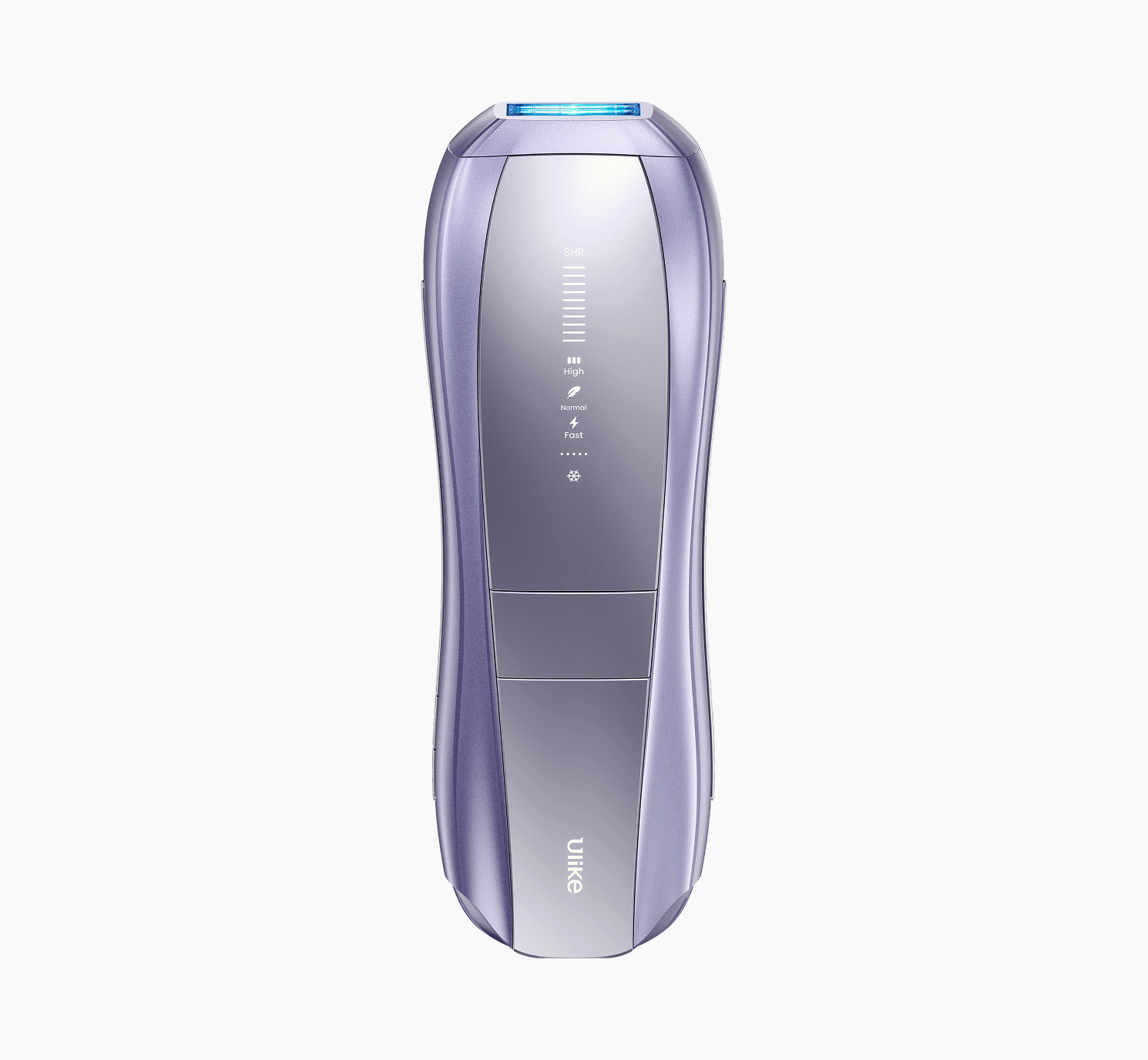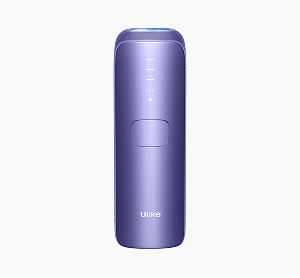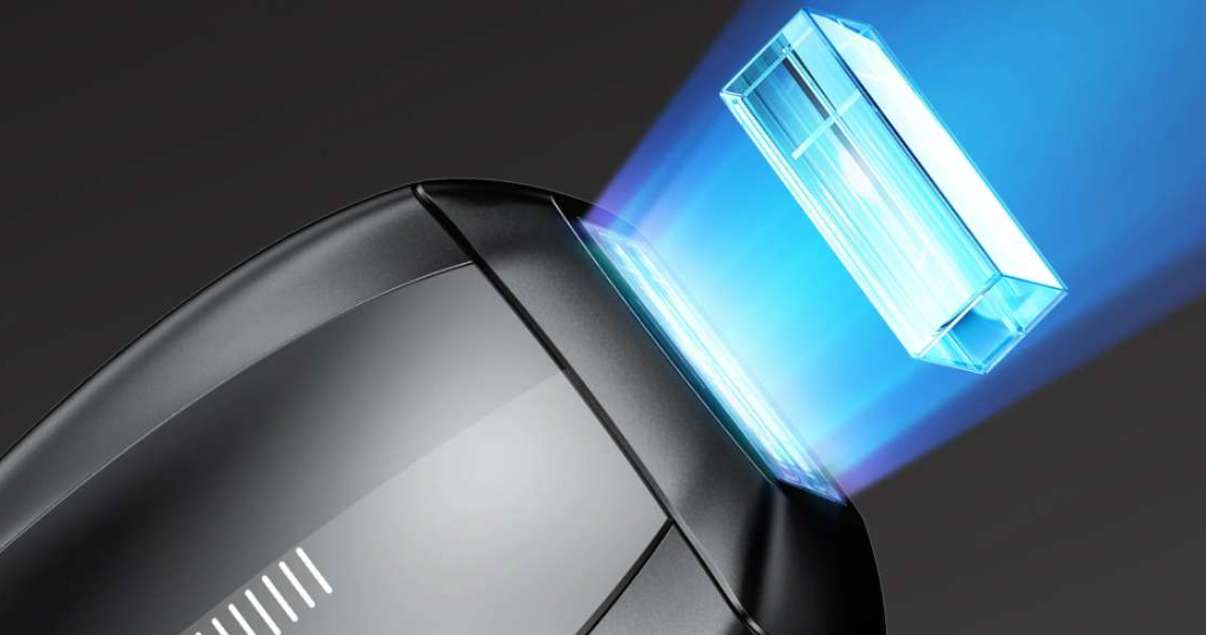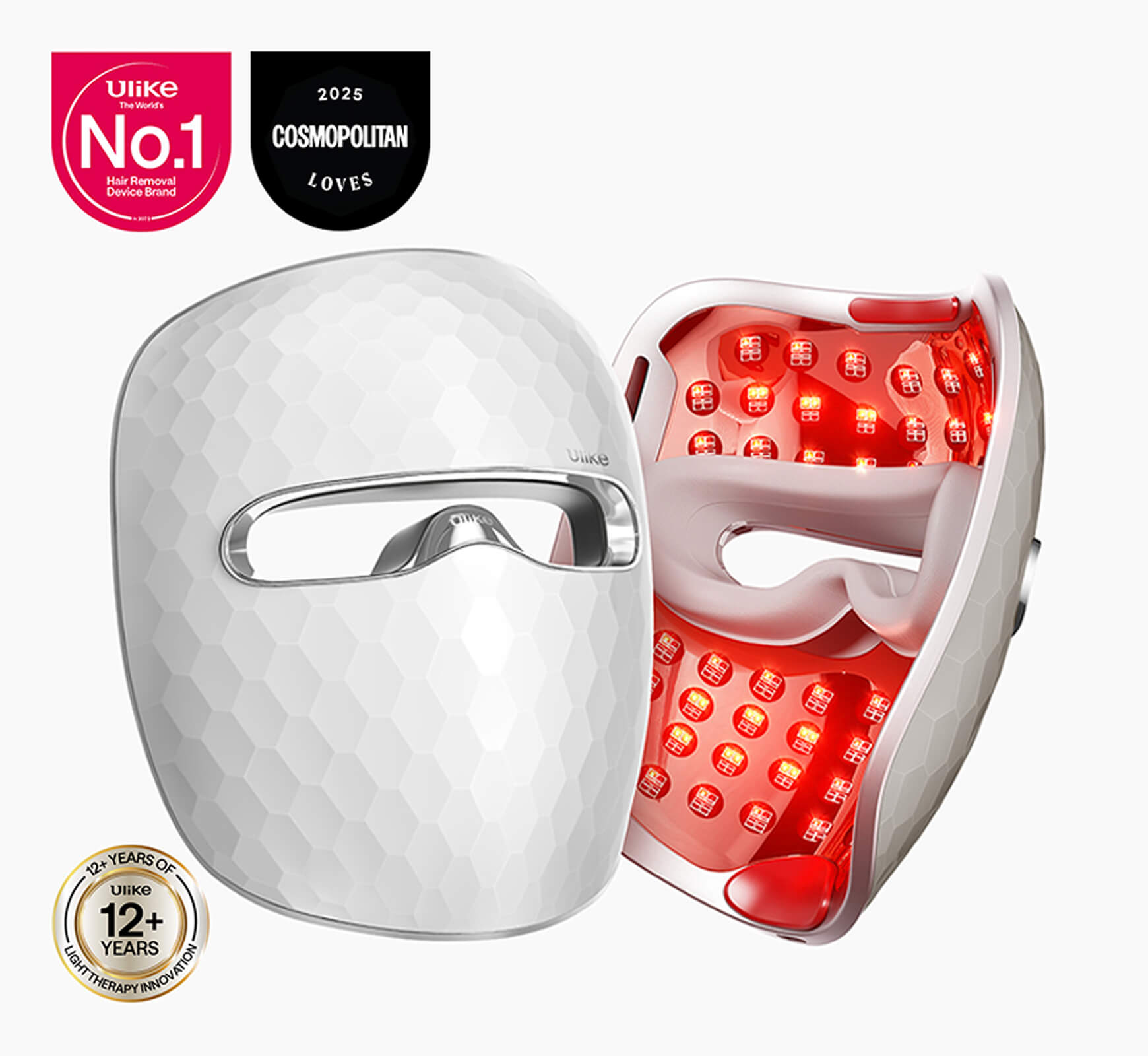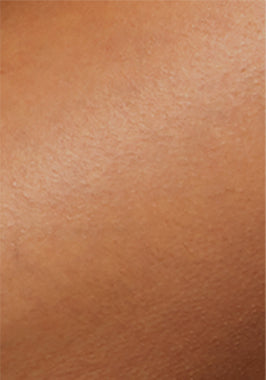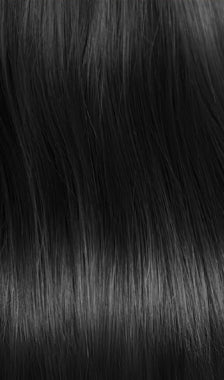At-home laser hair removal offers several benefits, including:
- A seamless method of hair removal that allows you to do it yourself
- A solution to unwanted hair that ensures your privacy is not compromised
- A relatively painless way to remove unwanted hair without the need for constant monitoring
Despite its numerous advantages, the frequency of at-home laser hair removal sessions is still a common question, particularly for those new to IPL devices. Let's solve this mystery for you!
Let's discuss 'when to use laser hair removal at home.' You'll find answers related to the frequency and effects of at-home lasers here. So, let's begin!
Table of Contents:
- Part 1: The Hair Growth Cycle
- Part 2: Effect of At-Home Laser Hair Removal on Different Phases of the Hair Growth Cycle
- Part 3: Which Frequency of At-Home Laser Hair Removal Sessions is Most Effective?
- Part 4: What is the Recommended Treatment Schedule for At-Home Laser Hair Removal?
- Part 5: How Can I Set Up My Laser Hair Removal Schedule More Reasonably?
Part 1: The Hair Growth Cycle
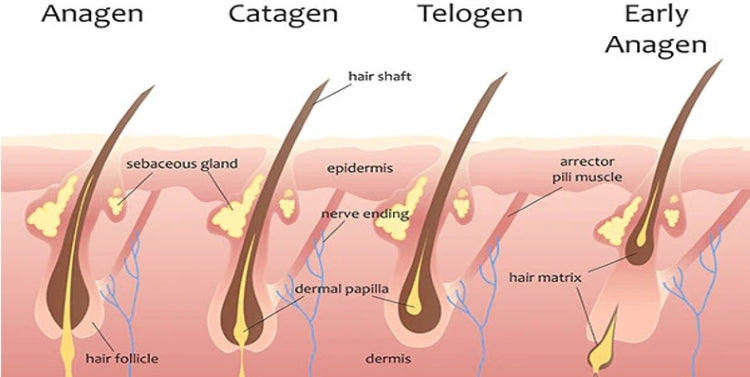
Before delving into how often you should use at-home laser hair removal, it's essential to understand the basics of the hair growth cycle of your unwanted body hair. This knowledge will help you follow a proper schedule and achieve the best results.
The hair growth cycle on any part of the body primarily consists of four stages, as explained in Philip Kingsley's Blog [1].
Anagen
When the hair starts growing from the hair follicles, it is in the anagen phase of hair growth. Here are some key points about anagen:
- This phase is the period of active hair growth.
- The dermal papilla of the hair is attached to the follicles and lies below the stem cells.
- Hair receives a good blood supply, which provides it with nutrients.
- The hair elongates to its maximum length.
Catagen
Once the hair reaches its maximum length, it enters the catagen phase. During catagen:
- The hair stops growing actively.
- The root of the hair remains attached to the follicle.
- The dermal papilla now moves upwards to the point of the hair follicle stem cells.
- Hair stops receiving an active blood supply.
Telogen
During the telogen phase:
- The size of the dermal papilla is normal, but it stops receiving blood supply.
- The hair roots detach from the follicles.
Exogen
Lastly, the early anagen or exogen phase begins. In this phase:
- The detached hair sheds from the surface of the skin.
- New hair starts growing from the follicles.
Part 2: Effect of At-Home Laser Hair Removal on Different Phases of the Hair Growth Cycle

Here's how at-home laser hair removal interacts with different stages of the hair growth cycle.
Maximum Effect During Anagen
Anagen is the phase when the dermal papilla lies beneath the stem cells and receives a good blood supply. It is the most susceptible to the effects of IPL hair removal treatments. Around 89% of hair is in this phase, and it lasts the longest.
In the anagen phase, at-home laser hair removal works by shrinking the papilla and disrupting the blood supply to the growing hair. As a result, the hair stops growing, and its follicles shrink as well.
It's important to note that, according to an article in The Beres Ford Clinic , laser hair removal is only effective on hair in the anagen phase [2].
Moderate to Little Effects During Catagen and Telogen
Approximately 10 to 15% of hair is in the catagen and telogen phases combined. During these phases, there is no active blood supply, and the papilla is smaller, meaning the effects of at-home laser hair removal are minimal.
No Effect in Exogen
At this stage, the hair is detached from the follicles and is on its way to shedding. Using an at-home IPL device on hair in the exogen phase has no effect. Therefore, it's essential to wait until the hair enters the anagen phase for IPL rays to take action.
Part 3: Which Frequency of At-Home Laser Hair Removal Sessions is Most Effective?
The most effective frequency of at-home laser hair removal is one that targets all the body hair in the anagen phase. Since the average lifespan of body hair is one to two months, it's important to focus your maximum sessions in the initial months of your treatment.
Over time, around 3 to 5% of the hair in the exogen phase transitions into the anagen phase, and these hairs can be removed with biweekly sessions. Therefore, the ideal frequency is as follows:
- 2 to 3 sessions per week in the first month
- 1 to 2 sessions per week in the second month
- 1 session every one or two weeks in the following months
- Follow-up sessions as needed, based on hair growth and individual results
Part 4: What is the Recommended Treatment Schedule for At-Home Laser Hair Removal?
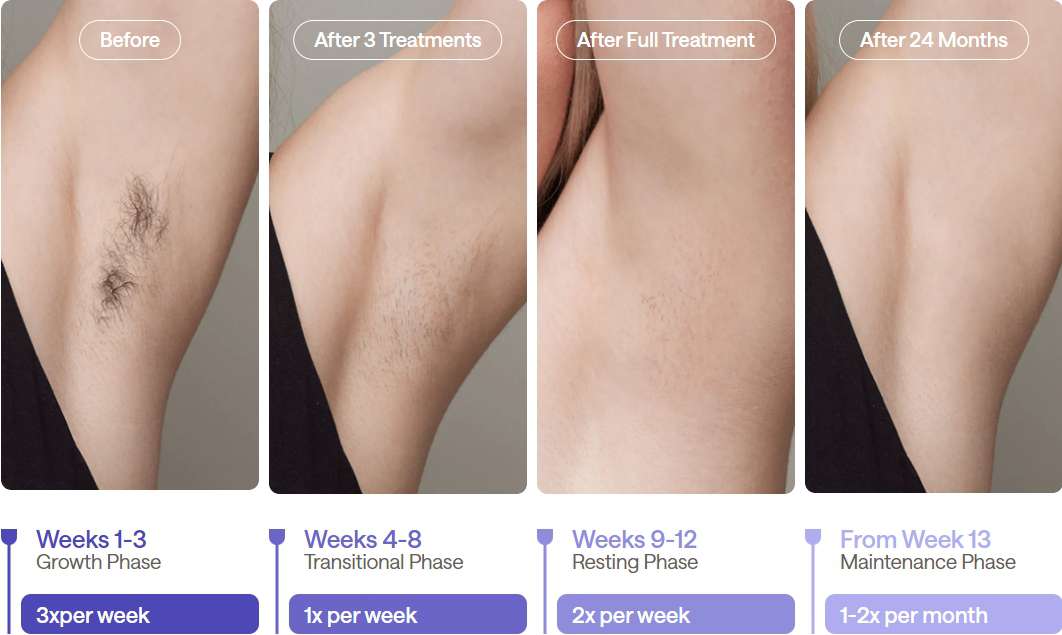
Let's devise an at-home laser hair removal treatment schedule for you:
In the First Month
Each hair enters the anagen phase of hair growth approximately every two weeks. This is the most effective period for using an IPL hair removal device. It is recommended to:
- Perform at-home laser hair removal sessions on alternate days initially, with 3 sessions per week.
- For those with sensitive skin or sensitive areas, 2 sessions per week may be more appropriate.
Although different IPL devices may suggest a slightly different schedule, the timeline for results can vary. This schedule has proven to be one of the most effective. For example, a laboratory test at Ulike showed that users removed more than 95% of their unwanted hair in just 2 weeks [3].
In the Next Month
After the first month, the goal is to target any hair that was in the catagen and telogen phases during the first month. At this point, you can reduce to 1 hair removal session every 2 weeks. This means only 2 sessions in the second month should be enough to achieve satisfactory results.
In the Last Month
By now, most of the hair should be removed. However, some patches may still remain. To remove up to 99.9% of unwanted hair over the next 6 months, you can schedule 1 session in the last month.
Follow-Up Sessions
After 12 weeks of regular IPL hair removal sessions, you will have completed the initial treatment. From here, you can transition to maintenance sessions. Dr. Alpana suggests that you perform 1 hair removal treatment every 4 to 8 weeks to maintain results and enjoy long-lasting silky smooth skin [4].
Part 5: How Can I Set Up My Laser Hair Removal Schedule More Reasonably?
It is crucial to follow the recommended frequency for safety and effectiveness. The variance in treatment sessions among different devices is largely due to the intensity and energy output of each device. The number of sessions you need can also depend on various factors, such as:
- The area under treatment
- Skin sensitivity in the treated area
- Hair thickness
- The strength of the hair follicles
- Any underlying hormonal changes
What if I Use it Every Day?
Using an at-home laser hair removal device every day or more frequently can actually do more harm than good. Since IPL only works on hair in the anagen phase, repeating the treatment daily will not alter the hair growth cycle. Instead, it could:
- Make the treatment ineffective as hair follicles may become tolerant to the IPL radiation.
- Increase the risk of side effects, such as redness, itching, blistering, and burns.
What if I Use it Only Once a Month?
For maintenance sessions, a once-a-month treatment schedule can be effective. However, you must follow a more frequent routine during the initial phase, with treatments 2 to 3 times a week. This is because the energy output of at-home devices is most effective when used repeatedly over the desired treatment area in the first month.
If you use the device only once a month, the hair follicles won't be effectively destroyed, and you won't achieve the long-lasting results you desire.
Part 6: Why is There a Need for Follow-Up Sessions of At-Home Laser Hair Removal?
The results of any IPL hair removal device are not permanent. While you can expect noticeable results lasting for several months, you won't remain completely hairless forever. Regular follow-up sessions are necessary to:
- Remove any remaining patches of hair.
- Manage hair regrowth.
- Maintain the long-lasting results achieved from IPL treatments.
Conclusion
At-home laser hair removal is most effective during the hair's active growth phase. This is why it's essential to use an IPL device when it can target unwanted hair in the anagen phase. This article explains the length of the anagen phase and outlines the recommended frequency of at-home laser hair removal treatments based on it, ensuring you achieve the best results and long-term hair reduction.
References
- Trichology Talks; The Hair Growth Cycle. Anabel Kingsley. April 11, 2022. Philipkinsley.co.UK. https://www.philipkingsley.co.uk/hair-guide/hair-science/hair-growth-cycle.html
- IPL & the importance of the hair growth cycle. In the section on Advice and Treatments. https://theberesfordclinic.co.uk/ipl-the-importance-of-the-hair-growth-cycle/
- Clinically Proven Results in Just 2 Weeks. Ulike.com. https://www.ulike.com/products/sapphire-air-10-ipl-hair-removal
- How Often do you use IPL at Home for Hair Removal? Dr. Alpana Mohta Ranka. July 22. Dralpana.com. https://www.dralpana.com/post/how-often-to-use-ipl-at-home-for-hair-removal

